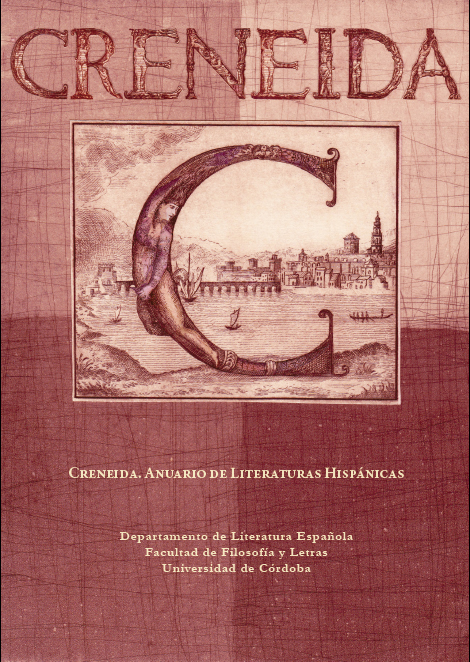The Favonio’s Curtains and the Love Hunt of Acis (Góngora, Polifemo, XXVII, 213-216)
Main Article Content
Abstract
Góngora’s Fábula de Polifemo y Galatea has always been acknowledged as a narrative piece of poetry. However, to account for its rigid structure discloses the significance of places. ‘Reluctant’ to any interpretative ambiguity though they may seem, these places are, on the contrary, featured by it. A case in point is the second half of verse XXVII, traditionally related to Galatea. If attention is paid to the loving strategy carried out by Acis, its reading not only shows Gongora’s extraordinary accuracy but it also notably enriches the meaning of the scene when seduction takes place. That is to say, beside the traditional topic of the battle of love ‘love hunt’ can also be found. Favonio, the wind, the hunter’s accomplice, indirectly expresses the hiding ploy, in any case needed in the sequence but non-existent in previous interpretations of the scene.
Downloads
Download data is not yet available.
Publication Facts
Metric
This article
Other articles
Peer reviewers
0
2.4
Reviewer profiles N/A
Author statements
Author statements
This article
Other articles
Data availability
N/A
16%
External funding
N/A
32%
Competing interests
N/A
11%
Metric
This journal
Other journals
Articles accepted
57%
33%
Days to publication
74
145
- Academic society
- Creneida. Anuario de Literaturas Hispánicas
Article Details
How to Cite
ROMÁN GUTIÉRREZ, Isabel. “The Favonio’s Curtains and the Love Hunt of Acis (Góngora, Polifemo, XXVII, 213-216)”. Creneida. Journal of Hispanic Literatures, no. 4, Dec. 2016, pp. 312-37, doi:10.21071/calh.v4i.6394.
Section
Miscellanea
Avisos de derechos de autor propuestos por Creative Commons
1. Política propuesta para revistas que ofrecen acceso abierto
Aquellos autores/as que tengan publicaciones con esta revista, aceptan los términos siguientes:- Los autores/as conservarán sus derechos de autor y garantizarán a la revista el derecho de primera publicación de su obra, el cuál estará simultáneamente sujeto a la Licencia de reconocimiento de Creative Commons que permite a terceros compartir la obra siempre que se indique su autor y su primera publicación esta revista.
- Los autores/as podrán adoptar otros acuerdos de licencia no exclusiva de distribución de la versión de la obra publicada (p. ej.: depositarla en un archivo telemático institucional o publicarla en un volumen monográfico) siempre que se indique la publicación inicial en esta revista.
- Se permite y recomienda a los autores/as difundir su obra a través de Internet (p. ej.: en archivos telemáticos institucionales o en su página web) antes y durante el proceso de envío, lo cual puede producir intercambios interesantes y aumentar las citas de la obra publicada. (Véase El efecto del acceso abierto).





